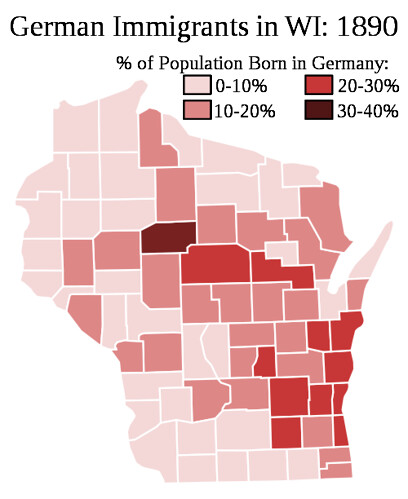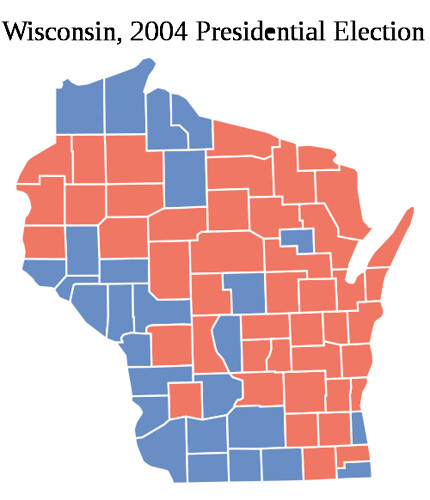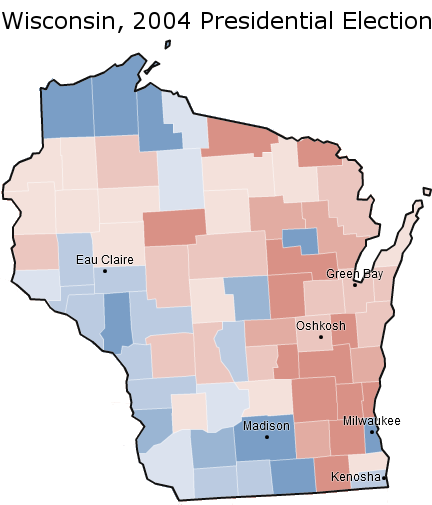By: Inoljt, http://mypolitikal.com/
Wisconsin, the badger state, constitutes a perennial battleground state. Like many of its Midwestern neighbors, the state leans Democratic but remains readily willing to vote Republican. While voting for Presidents Bill Clinton and Barack Obama by double-digit margins, the state also came within one percent – twice – of voting for Republican candidate George W. Bush.
These voting patterns have quite interesting historical roots. Indeed, they stretch back for more than a century.
To examine these roots, let’s first take a look at a map of German immigration patterns in 1890:
More below.
This map, derived from the New York Times, graphs the percentage of German-born immigrants in each Wisconsin county from the 1890 census. There is a striking correlation between this map and Wisconsin in the 2004 presidential election:
In that election, Senator John Kerry clung to Wisconsin by a razor-thin 0.4% margin, winning 49.7% of the vote to Mr. Bush’s 49.3%. As this map indicates, counties heavily settled by Germans form the Republican voting base which Mr. Bush relied upon. This pattern persists even more than a century after the height of German immigration.
It is also still quite powerful. Out of the twelve counties with greater than 20% German-born immigrants in 1890, only one (Milwaukee) voted for Mr. Kerry.
There are exceptions, of course – and German settlement patterns do not form the entire picture of Wisconsin’s electoral demography. Milwaukee, for instance, gave 61.7% of its vote to the Massachusetts senator, despite being composed of 38.9% German immigrants in 1890. This is due to its relatively high black population today and corresponding white flight, which depleted the city of its German-American population. Scandinavian settlement patterns in non-German rural Wisconsin, to use another example, account for their Democratic vote today (interestingly, rural Wisconsin constitutes one of the last Democratic bastions in rural America).
Nevertheless, the overall pattern is still quite striking. A more detailed look at Wisconsin in 2004 only strengthens the link:
As is evident, the correlation between German immigration and Wisconsin’s electoral geography finds a resemblance in both degree and strength. The most Republican-voting regions, located along the southeastern portion of the state, also counted themselves highest in German immigrants in 1890.
Finally, this type of demographic analysis can be used to explain why states vote as they do in far more than just Wisconsin. From Democratic strongholds in former cotton-growing areas of the Deep South to South Dakota’s Native-American and Democratic-voting reservations, history offers a fascinating insight into contemporary politics.

























